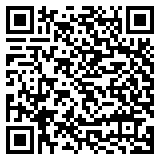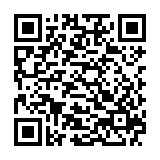In today’s fast-paced and interconnected world, language services play a pivotal role in breaking down communication barriers. The advent of technology has revolutionized the field, transforming the way translators and interpreters work. This article explores the dynamic landscape of language services, delving into the tools and software that are reshaping the industry as well as the impact of technology on interpretation and translation.
The Traditional Landscape and the Impact of Technology on Interpretation
To understand the magnitude of the changes introduced by and the impact of technology on interpretation, it is crucial first to grasp the traditional methods employed by translators and interpreters. Historically, these professionals relied heavily on dictionaries, glossaries, and human memory, emphasizing linguistic expertise and cultural understanding.
The Rise of Machine Translation
One of the most significant advancements in recent years is the emergence of machine translation (MT) tools. These applications leverage artificial intelligence to translate text from one language to another, often in real time. Popular platforms like Google Translate and Microsoft Translator have become household names, providing instant translations that were once unimaginable.
The Human Touch: Neural Machine Translation (NMT)
While machine translation has made remarkable strides, it is essential to recognize the importance of the human touch in language services. Neural Machine Translation (NMT) represents a more sophisticated approach, combining the power of artificial intelligence with human-like comprehension. This section explores the strengths and limitations of NMT in comparison to traditional machine translation.
Computer-Assisted Translation (CAT) Tools
In addition to machine translation, translators now have access to a range of Computer-Assisted Translation (CAT) tools. These tools enhance efficiency by assisting human translators in their work, offering features such as translation memory, terminology management, and quality assurance. Here’s a look at the diverse functionalities of CAT tools and their impact on the translation process:
Translation Memory (TM)
CAT tools leverage the power of Translation Memory, a functionality designed to store previously translated segments of text. This allows translators to recycle and reuse translations for recurring phrases or sentences. As a result, consistency across documents is maintained, reducing redundancy and enhancing overall translation efficiency.
Terminology Management
Maintaining consistent terminology is paramount in translation, especially in specialized fields. CAT tools come equipped with Terminology Management features that allow translators to create and manage glossaries specific to a project or industry. This ensures that key terms are translated uniformly throughout the document, promoting accuracy and coherence.
Segmentation and Contextual Analysis
CAT tools break down a document into smaller, more manageable segments, such as sentences or paragraphs. Translators can work on these segments independently, ensuring a focused and systematic approach to translation. Moreover, CAT tools offer contextual analysis, providing translators with the broader context of the text to aid in accurate and nuanced translations.
Quality Assurance (QA) Checks
CAT tools integrate Quality Assurance (QA) checks to uphold translation standards. These checks identify potential errors, inconsistencies, or deviations from established guidelines. By automating this process, CAT tools empower translators to deliver high-quality translations, meeting clients’ stringent requirements and ensuring linguistic precision.
Integration with Machine Translation (MT)
While CAT tools prioritize human expertise, they also recognize the value of machine assistance. Many CAT tools integrate with Machine Translation (MT) engines, allowing translators to benefit from automated suggestions. This synergy between human translators and machine-generated proposals balances efficiency and linguistic nuance.
Overcoming Language Barriers in Real Time: Interpretation Technologies
Interpreters face unique challenges in conveying meaning across languages in real-time settings. Technology has responded to this demand with innovative solutions. Video Remote Interpretation (VRI) and Over-the-Phone Interpretation (OPI) services are now widely used, enabling interpreters to provide on-the-spot assistance from remote locations. Here’s a brief look at the benefits and considerations of these technologies:
Video Remote Interpretation (VRI)
Virtual Presence and Visual Cues: VRI brings interpreters into the room virtually, allowing them to see and be seen by participants. This virtual presence enhances communication by enabling interpreters to pick up on visual cues, body language, and facial expressions, enriching the interpretation with contextual depth.
Flexibility and Accessibility: VRI breaks down physical barriers, offering interpretation services remotely. This flexibility is precious when immediate access to an on-site interpreter is impractical. Additionally, VRI ensures that interpreters with specific language expertise are readily available, regardless of their physical location.
Cost-Efficiency and Time Savings: The virtual nature of VRI contributes to cost savings by eliminating the need for travel expenses and accommodations. Moreover, VRI reduces the time required for coordination, allowing interpreters to seamlessly connect with clients and participants, resulting in swift and efficient communication.
Over-the-Phone Interpretation (OPI)
Instantaneous Language Support: OPI services provide on-the-spot language assistance through telephone connections. This instant accessibility is invaluable when face-to-face interaction is not feasible, ensuring a rapid response to language needs, especially in emergencies or emergencies.
Scalability and Availability: OPI services are highly scalable, allowing organizations to access a pool of interpreters with diverse language skills. This scalability ensures that language support is available on-demand, catering to a broad range of linguistic requirements in various settings, from healthcare to legal proceedings.
Convenience and Affordability: OPI eliminates the need for physical presence, making language interpretation more convenient and affordable. It mitigates logistical challenges associated with coordinating in-person interpretation services and provides a cost-effective solution for organizations with varying language support needs.
Considerations and Ethical Implications
While VRI and OPI offer remarkable advantages, it is essential to acknowledge the considerations and ethical implications associated with these technologies:
Privacy and Confidentiality: Ensuring the privacy and confidentiality of sensitive information during remote interpretation is paramount. Both interpreters and users must be aware of the security measures in place to protect the integrity of the communication.
Technology Reliability: The effectiveness of VRI and OPI hinges on the reliability of technology infrastructure. Factors such as internet connectivity and the quality of telephone lines play a crucial role in sustaining seamless communication.
Cultural Sensitivity: Interpreters must remain attuned to cultural nuances even in virtual or remote settings. Understanding the cultural context of the communication ensures accurate interpretation and prevents misunderstandings.
Wrapping Up the Impact of Technology on Interpretation and Translation
The transformative impact of technology on language services is undeniable. From machine translation and CAT tools to real-time interpretation technologies, the field is evolving at a rapid pace. As we navigate this ever-changing landscape, it is crucial to appreciate the synergy between technological advancements and the enduring importance of human expertise in bridging linguistic and cultural divides.





0 Comments